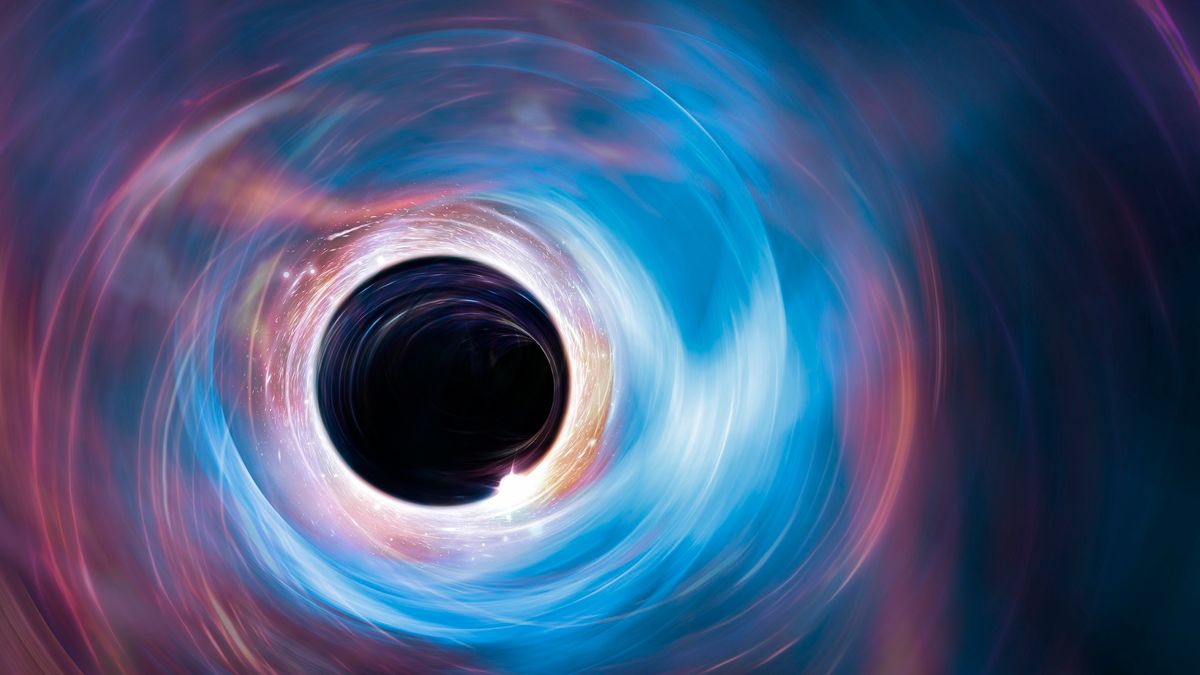The early universe contained far fewer miniatures black holes than previously thought, making the origin of the missing matter in our cosmos even more of a mystery, a new study suggests.
Miniature or primordial black holes (PBHs) are black holes thought to have formed in the first fractions of a second after the Big Bang. According to leading theories, these dime-sized singularities emerged from rapidly collapsing regions of dense, hot gas.
Pockets of infinitely dense spacetime are how many physicists explain the universe’s dark matter, a mysterious entity that, despite being completely invisible, makes the universe much heavier than can be explained by the matter we can see.
But even though the hypothesis is popular, it has one big problem: We haven’t directly observed any primordial black holes yet. Now, a new study offers a possible explanation for why they didn’t form, putting the dark matter problem of cosmology to wider speculation.
According to the study, the modern universe may have formed with far fewer primordial black holes than previous models suggested. The researchers published their findings May 29 in the journal Physical examination letters.
Connected: First discovery of ‘hiccupping’ black hole leads to surprising discovery of 2nd black hole orbiting it
“Many researchers believe that [primordial black holes] are a strong candidate for dark matter, but there would have to be a lot of them to satisfy this theory,” the lead author Jason Cristianograduate student in theoretical physics at the University of Tokyo, it said in a statement. “They are also interesting for other reasons, as since the recent innovation in gravitational wave astronomy there have been discoveries of binary black hole mergers, which could be explained if PBHs exist in large numbers.” But despite these strong reasons for their expected abundance, we haven’t seen directly, and now we have a model that should explain why this is so.”
Hole in photo
The universe began 13.8 billion years ago with Big bangcausing the young cosmos to explode outwards due to an unseen force known as dark energy.
As the universe expands, ordinary matter that interacts with light condenses around clumps of invisible dark matter to create the first galaxies linked together in a vast cosmic web. Today, cosmologists estimate that ordinary matter, dark matter, and dark energy make up about 5%, 25%, and 70% of the composition of the universe, respectively.
The universe was originally an opaque, plasma broth through which no light could pass without being caught by electromagnetic fields produced by moving charges. Yet after 380,000 years of cooling and expansion, the plasma eventually recombined into neutral matter, giving off microwave static that became the universe’s first light, the cosmic microwave background (CMB).

Cosmologists have been looking for these early black holes by studying this first baby picture of the universe. Yet, so far, none have been found.
Some physicists believe that it’s possible that they haven’t discovered the huge number of primordial black holes needed to count dark matter simply because they haven’t yet learned how to detect them.
But by applying a model built on an advanced form of quantum mechanics called quantum field theory to the problem, the researchers behind the new study came to a different conclusion—we can’t detect any primordial black holes because most of them simply aren’t there.
The primordial black holes are thought to have arisen from the collapse of short but powerful gravitational waves that ripple through the universe. By applying their model to these waves, the researchers found that it may take far fewer of these waves to combine than other theories estimate to form larger structures in the universe. And the fewer waves needed to recreate the picture, the fewer primordial black holes.
“It is widely believed that the collapse of short but strong waves in the early universe is what creates primordial black holes,” Christiano said. “Our study suggests that there should be far fewer PBHs than would be necessary if they were indeed a strong candidate for dark matter or gravitational wave events.”
To confirm their theory, the researchers will look to future ultra-sensitive gravitational wave detectors such as Laser Interferometer Space Antenna (LISA) project.which is due to be sent into space on an Ariane 3 rocket in 2035.
